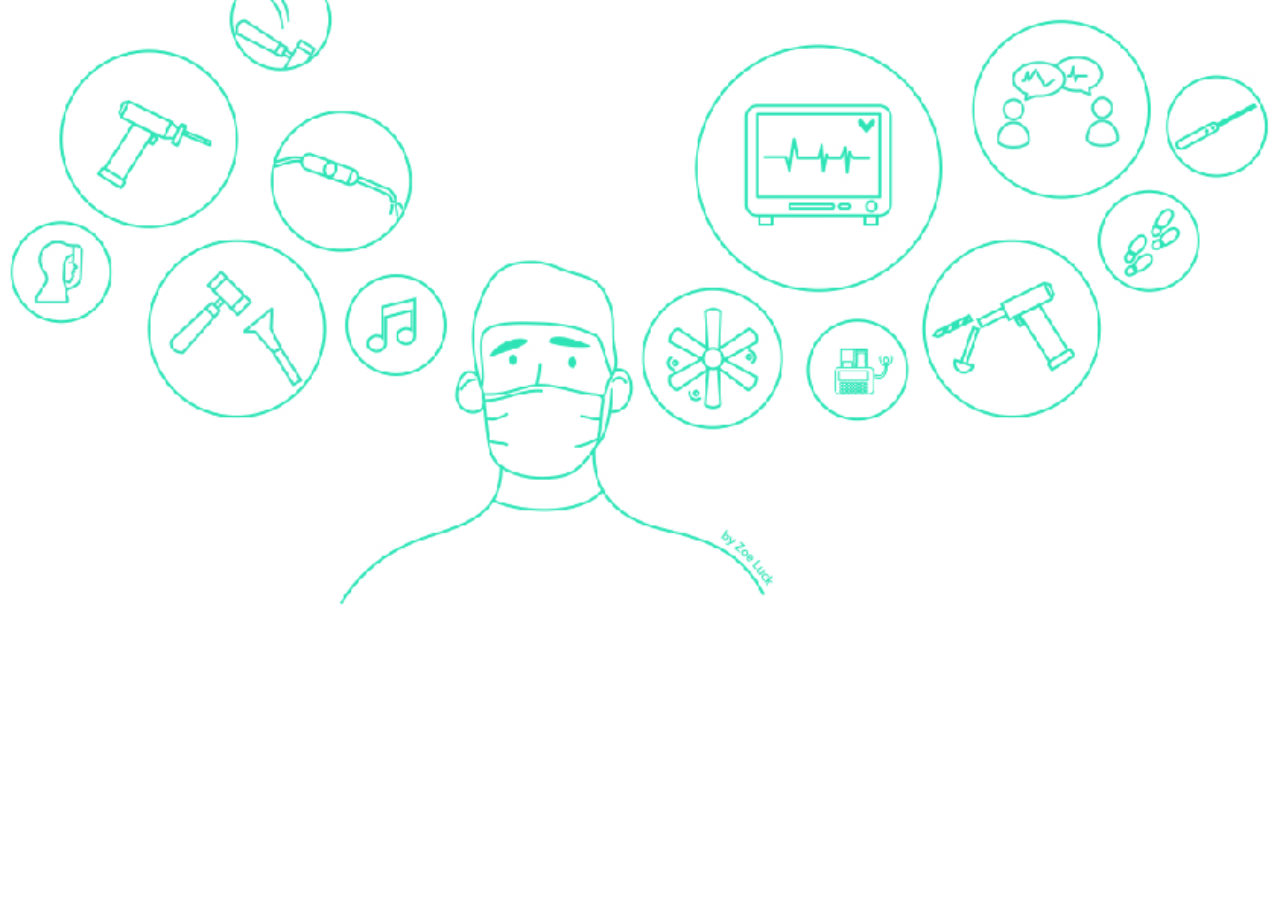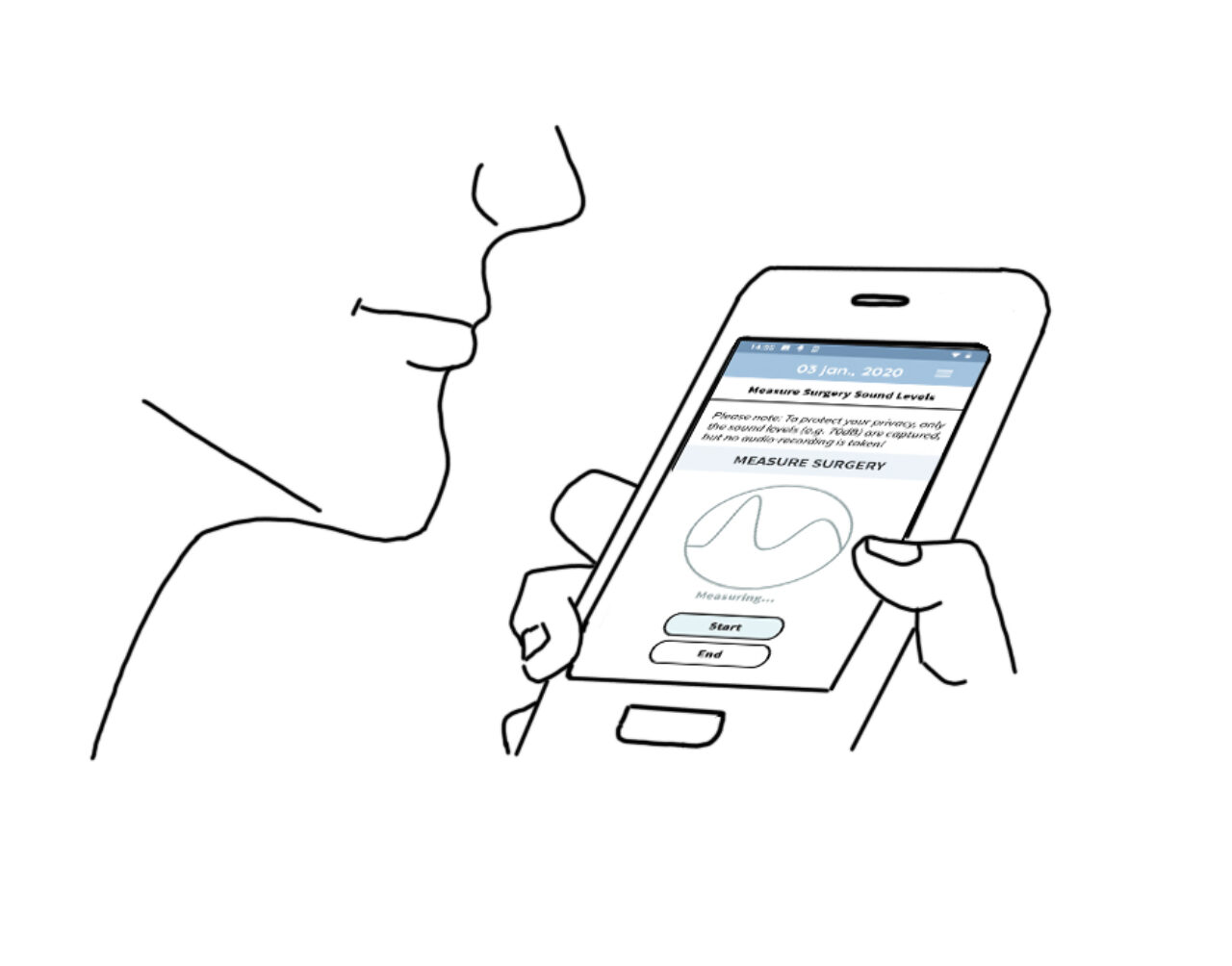An app to measure sound exposure in operating rooms
Mar 2020 - ongoing
Making noise-exposure measurable and comparable.
Making an app to measure sound exposure of individual staff members in the OR arrived out of necessity. One factor was that the Netherlands was in Corona lockdown. From previous research Zoe knew that some orthopedic operating rooms are very loud environments, exposing the medical staff to a significant amount of noise. But little is known about how the sound exposure distributes among the different kinds of surgeries (e.g. total knee replacements versus ligament surgeries on the knee), whether there is a difference among the professions (e.g. if surgeons are at higher risk of excessive sound exposure than anesthesiologists). But part of her thesis was to understand and assess the risks of sound among different orthopedic surgeries.

Therefore, we (Deanne and Zoe) developed an app – together with a smartphone and a microphone attached to their collar, individual staff members can easily measure their sound exposure during surgical procedures.
Before the surgery..
The app shows which profession someone is working in and the surgery type the person is attending. It is easy to use for the medical staff themselves.
During the surgery..
This app collects different decibel values (dBA and dBC) that are used to assess the general noisiness as well as to identify peak periods of the procedure steps. To further understand which specific sounds pose the highest risks, it is possible to describe sound events directly in the app by clicking a button or describing a sound event manually.
After the surgery..
The app gives direct feedback to the medical staff on the sound exposure during the procedure after they end the measurement. As researchers, the collected data allows us to really compare the sound exposure at the same time among the different professions, as the device was always closely with them. From the data we can identify risk periods, can give feedback to the staff, whether or not the sound exposure is too high.

Conclusion
From the already collected data we can see that there are certainly significant differences in sound levels between the different orthopedic procedures, but also sometimes between the professions. Knowing this is important for future sound innovation; be it for tools, protective equipment or for individual behaviors.